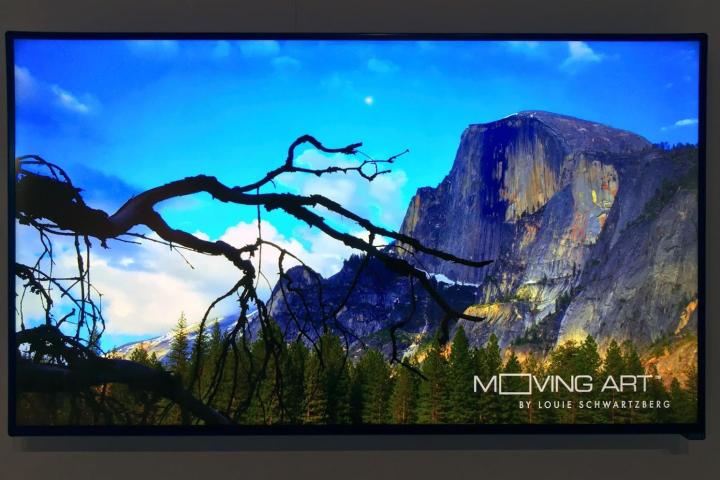
The company’s first effort at an Ultra HD TV lineup starts with a 50-inch model at $1,000 and tops out with a 70-inch monster going for $2,500. Each year, Vizio aims to disrupt the market by introducing high-performance televisions that sell at unprecedentedly low prices. With its P-Series, Vizio has outdone itself, bringing what many still consider to be a fledgling technology to the masses far earlier than was anticipated, even as recently as this past January, when the company first showcased its P-Series prototypes at CES 2014.
Updated on 9-24-2014 by Jeffrey Van Camp: We had a chance to see the new TVs in person. My first impressions are now added below.
Extremely low pricing is frequently associated with lower product quality — and for good reason — so, without seeing Vizio’s new wares in person, it might be easy to assume they won’t stack up well against premium, tier-1 competition from the likes of Samsung, Sony, and LG.
By the numbers
| Sizes (inches) | 50, 55, 60, 65, 70 |
| Resolution | 4K |
| Backlighting | Full-array direct LED |
| Refresh rate | 240Hz |
| Dynamic contrast ratio | 50,000,000:1 |
| Price range | $1000-$2500 |
Perhaps the most impressive specification featured in all of Vizio’s televisions (sized 32 inches and larger, including the high-value E-series and premium M-series) is full-array direct LED backlighting, with varying degrees of local dimming capability. While mounting LED lights along the edges of LCD TVs allow for extreme thinness, the practice comes with significant sacrifices to picture quality, most notably “bleeding” at the edges of the screen, and poor uniformity of brightness across the panel. By placing an array of LED lights directly behind an LCD panel, the bleeding effect is mitigated, and screen uniformity is vastly improved. Meanwhile, local dimming allows specific zones of these LED arrays to be controlled (dimmed) to achieve better black levels (and therefore, contrast), improving overall picture quality significantly.
For example: Let’s say you have a big bright sun or star in the middle of an otherwise black-as-night scene. You would only want the LEDs in the middle (where the sun is) to be cranked up. The rest of the LED backlights you’d want to turn off almost entirely to get the best possible blacks, so it looked like dark space, not a dirty gray blanket. As Vizio’s best for 2014, the P-series tops out with 72 active zones of dimming, allowing very precise backlight control.
Eyes on with the P Series (By Jeff)
In person, the TVs appear to deliver — mostly. We saw the whole lineup in action in New York, where Vizio put its 65-inch P Series head to head against the 65-inch model from the Samsung 8500 series, both with the same settings turned on. Vizio noticeably outpaced Samsung in these demonstrations, but more importantly, its picture quality looked very good, especially considering the price. Motion on the P Series has much less blur than we’re used to, and the local dimming zones (there are 64 in the 65-inch and more/less depending on the size of the model) give a brighter, more detailed image across the whole screen. Scenes from The Hobbit were shown off and had beautiful depth on Vizio’s screen.

Blacks were surprisingly deep for a non-plasma TV as well, and were most noticeable when watching letterboxed movies — a common thing these days. Vizio’s 1080p upscaling is also impressive, showing a lot of sharp detail. For example, I have seen Harry Potter and the Deathly Hallows (both parts) a few times before, but some of the details picked up by the 4K upscaling was enlightening. Did you know that Daniel Radcliffe sweats a lot during filming? I never noticed before.
On the downside, because of the emphasis on image quality and price, these are not the thinnest LED TVs by a long shot. They popped out several inches from the wall. It’s a small sacrifice for a good image, in our opinion, but you’ll have to make up your own mind. On top of that, the interface of the TV was sluggish and low-res — not what you’d expect from a quad-core processor and 4K display. Poor interfaces are, sadly, the norm so it doesn’t ruin the TV, but don’t expect to throw out your set-top box or Chromecast any time soon.
Vizio moving up the ladder
This latest news further cements Vizio’s move up the ladder from tier-2 manufacturer to tier-1 — from “Costco brand” to industry leader. Just a few short months ago, consumers and media alike were complaining that 4K/Ultra HD televisions were too new a technology to be taken seriously, but with so much 4K content on its way and prices on high-quality 4K/Ultra HD televisions clearly on their way down, perhaps public opinion will soon turn the corner.
Find a full listing of the P-Series with pricing below (prices are MSRP):
- Vizio 50” P-Series Ultra HD Full-Array LED Smart TV (P502ui-B1) $1,000
- Vizio 55” P-Series Ultra HD Full-Array LED Smart TV (P552ui-B2)$1,400
- Vizio 60” P-Series Ultra HD Full-Array LED Smart TV (P602ui-B3)$1,700
- Vizio 65” P-Series Ultra HD Full-Array LED Smart TV (P652ui-B2) $2,200
- Vizio 70” P-Series Ultra HD Full-Array LED Smart TV (P702ui-B3) $2,500



